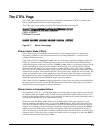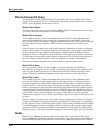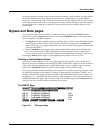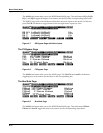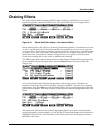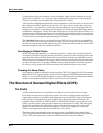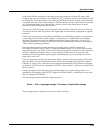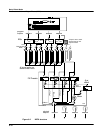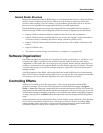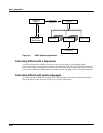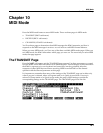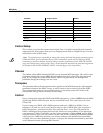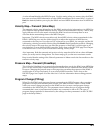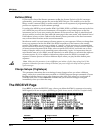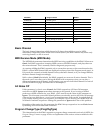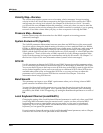
Basic Effects Mode
Software Organization
9-17
Normal Studio Structure
Many of the studios provided in ROM follow an overall organizational plan, which uses Effects
mode’s resources efficiently and clearly. While you’re by no means required to follow this
structure when creating your own studios, it’s a good idea to get familiar with it, to see how
Kurzweil’s own engineers have approached the issue of studio organization.
Inside the ROM programs and setups, the outputs KDFX-A through KDFX-D are assigned
based on the type of effects processing that would most likely be appropriate for that sound.
• Input A/FXBus1 contains a relatively simple reverb with a low Size requirement.
• Input B/FXBus2 contains an effect that does not increase the “length” of the sound (that is,
no reverb or delay), something like chorus, flange, distortion, pitcher, or EQ.
• Input C/FXBus3 contains effects that take up lots of time, such as delays, and delays with
reverb.
• Input D/FXBus4 is dry.
• The Aux bus contains a larger reverb (Size:3), a compressor, or a graphic EQ.
Software Organization
Like K2661 programs, the software user interface of a studio is organized in a “top-down” way:
A studio is an “object” in K2661 terms, and the FX presets within a studio are also objects,
“dependent” to the studio, the way a keymap is to a program. Studios and FX presets that you
modify or create are stored in program RAM. A studio contains up to five FX presets. The same
way that one keymap can be used in multiple programs, a particular FX preset can be used in
multiple studios.
Like ROM samples in the K2661, effects algorithms are stored in ROM and you cannot modify
them. Each FX preset contains one algorithm. Just as you can use the same sample in more than
one keymap, you can use the same algorithm in as many FX presets as you like.
Controlling Effects
Studios can be called up from the front panel, or they can be assigned to specific K2661
programs or setups. If you set the FXCtrl parameter on the Effects-mode page to Program,
Setup, or Auto, then changing a program (if the current channel agrees with the FX Channel) or
setup will select the studio associated with the new program or setup. Of course, just as you can
use the same keymap in multiple programs, you can use the same studio in multiple programs
or setups. Setting FXCtrl to Master means that the studio does not change with the program or
setup.
Studio parameters are set in the Studio Editor and are initially set up with fixed values, but they
can be also be controlled in real time by a wide range of control of sources, including K2661
onboard knobs, sliders, and ribbon; various internal software functions; and external MIDI
commands like those coming from a sequencer or a dedicated controller.



